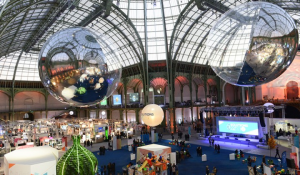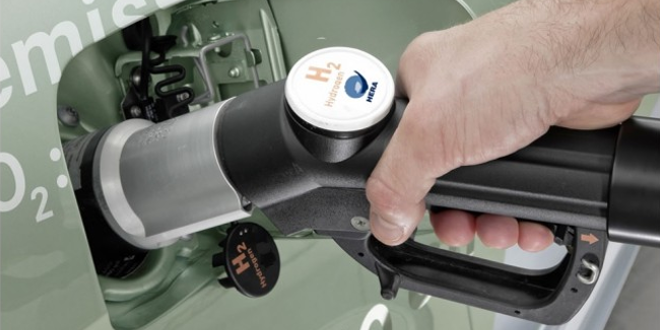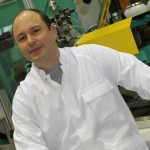Vabhyogaz uses our waste to produce hydrogen
Hydrogen is a resource that is prized for its applications in the chemical industry and for its role in the fuel cells used in electric vehicles. Vabhyogaz – a project initiated by Didier Grouset, a researcher at Mines Albi – proposes to convert biogas from our waste into hydrogen. The project, which began nearly ten years ago, is now entering its third and final phase of development in 2016.
Over two months after the 21st Conference of the Parties to the United Nations Framework Convention on Climate Change (COP 21), are any concrete solutions for limiting CO2 really emerging? Near Albi in the South West of France in any case, the Vabhyogaz project is quietly entering its third phase of development. This project initiated in 2007 has the goal of converting biogas from waste into hydrogen. This resource is particularly sought after for powering vehicle fuel cells, while only emitting water vapor.
Initially, Vabhyogaz stemmed from cooperation between N-GHY, an SME created by Didier Grouset as a spin-off from Mines Albi, specializing in the hydrogen industry, and TRIFYL, the Tarn regional federation for the recovery of household waste. The first stage of the project united regional partners together around TRIFYL and N-GHY, including Mines-Albi and Phyrénées, an association initiated in 2007 by these three entities, with the aim of bringing together a community focusing on hydrogen issues in the Languedoc-Roussillon-Midi-Pyrénées region. “To take an interest in the entire hydrogen value chain, and bring local stakeholders together to establish the originality of the Vabhyogaz concept,” explains Didier Grouset, a researcher at Mines Albi. The project now includes many different partners: SMEs, public authorities, and subsidiaries of multinational groups*.

The Vabhyogaz project was identified as a “Climate solution” at COP21 and was presented at the Grand Palais in Paris.
The process of converting waste into hydrogen starts with a natural process: methanization. In an oxygen-deficient environment, micro-organisms break down our waste and give off a gas: a mixture of carbon dioxide (CO2) and methane (CH4). This mix is what is what we call “biogas”. To speed up this process, which can last around thirty years in a landfill, Trifyl uses a bioreactor, reducing the biogas production time to fifteen years. The above-ground anaerobic fermentation of our domestic, agricultural and food-processing waste, using a biogas plant, will also produce biogas in only a few days.
“The biogas is then purified by removing the minor pollutant compounds, such as hydrogen sulfide and, usually, CO2 is removed as well, but the unique aspect of the Vabhyogaz process is that it eliminates this costly step,” explains Didier Grouset. The chemist adds: “Instead, we take the methane-carbon dioxide directly and place it under 15 bar of pressure at 900°C by introducing water vapor, all in a nickel-based catalyst.” The methane and water therefore react to form carbon monoxide (CO) and the coveted hydrogen (H2). This reaction is completed by the reaction of CO with the remaining water vapor at 200 °C, again forming hydrogen and CO2. The hydrogen produced therefore comes from the waste and water that have reacted.
Extra-pure hydrogen
Once the hydrogen synthesis process is completed, it is purified to obtain a purity of 99.995%. “This is essential for complying with the supply standard for hydrogen fuel cells, and guaranteeing their long-term service life,” warns Didier Grouset. Mastering this procedure brought an end to the second phase of the Vabhyogaz project, which was completed in 2014. “Today, our partners have a prototype capable of producing 10 kg of hydrogen per day,” the researcher notes. This is enough to power a few hydrogen-powered electric Kangoo vehicles that can travel over 200 km per day. Didier Grouset recognizes that this “is still small compared to our future needs,” and that a production unit “becomes advantageous, in other words, economically profitable, starting at 100 kg of hydrogen per day.”
This explains the upgrade scheduled to take place during the third phase of the Vabhyogaz project, which will begin in early 2016, as part of the Investments for the Future program. This phase will be aimed at commercializing units with production capacities ranging between 100 and 800 kg of hydrogen per day. These units could then become distributed production units, each able to supply several operators at the local level. The thinking on how to transport the hydrogen resource will also be included in this phase. Containers of tanks made of composite materials, which are lighter and better adapted to transporting hydrogen, are being developed as part of the project.
What does the future hold for the hydrogen energy sector?
Identified as a “climate solution” at COP21 where it was presented at the Grand Palais in Paris, the Vabhyogaz project has a promising future. But its viability is based just as much on the quality of the project, as on the need for changes in the use of hydrogen as energy. Didier Grouset seems optimistic about this, initially mentioning a national specificity that has led to the development of less expensive hydrogen-powered vehicles: “One of France’s distinctive practices is the use of hydrogen fuel cells as battery range extenders, and not as the main power supply for the electric motor.” For French manufacturers, fuel cells used to recharge the battery only need to produce the average power required for the electric vehicle, which has a motor that is primarily powered by the battery. This is different from the practices of the foreign competitors, which have favored the use of a fuel cell capable of supplying the maximum power for the motor. The researcher helps explain the context: “In the first situation, the fuel cell must have an output of 5 kW, as opposed to 100 kW in the second.”
But hydrogen energy is up against a very difficult opponent: oil. “With the Vabhyogaz solution, the price becomes competitive,” says Didier Grouset. In numbers, this would translate as a target of one kilogram of hydrogen costing €8 including tax, keeping in mind that it takes approximately 1 kg of hydrogen to travel 100 km. But this target is set in comparison to a liter of diesel fuel at €1.20 including tax. And, the current context of falling oil prices appears to make this an uneven fight. Still, Vabhyogaz is not doomed to failure. “The motivation shown by users remains a key to success,” he declares confidently. The project can benefit from its history in this area, as the researcher reminds us: “Around Albi, the hydrogen sector has been a topic of conversation since 2007; this is especially due to the Phyrénées association.” Vabhyogaz will therefore seek to target company vehicle fleets during its third phase.
Hydrogen, a resource for industry
The automotive sector is not the only industry targeted by this project. Although fuel cells are the most remarkable application of hydrogen, another application also exists, and is just as important: the chemical industry. The manufacture of semiconductors – key components in microelectronic equipment – requires large quantities of hydrogen. The same applies to the production of high-quality glass and the heat treatment of metals. However, “there are very few production sites for commercial hydrogen, resulting in long transport distances,” explains Didier Grouset. And yet, many industrial needs exist, ranging between 100 kg and 500 kg of hydrogen per day. The production units developed by Vabhyogaz could therefore directly supply the stakeholders in question.
In order to reach this stage, phase 3 of the Vabhyogaz project will also include life-cycle analyses and energy optimization studies for all steps in the procedure. This will specifically involve confirming that consumption has decreased for the hydrogen distribution units and for its transport, with the aim of reducing the environmental impact of the production chain for the conversion of biogas into hydrogen. Vabhyogaz is truly an environmentally motivated project, in terms of the purpose of hydrogen use, and also throughout the entire hydrogen value chain.
Read more on our blog: PREVER, residue turned into energy
[box type=”shadow” align=”” class=”” width=””]
Vabhyogaz, a collaborative success story
The Vabhyogaz 2 project has been coordinated by ALBHYON, a subsidiary of HERA France (HERA group, which originated in Spain). ALBHYON has continued the work of N-GHY in partnership with TRIFYL. This project was partially funded by ADEME as part of the TITEC program.
Following the proof of concept for phase 2, HERA decided to develop a range of products for producing and distributing hydrogen from renewable sources. This is the goal of phase 3 of the Vabhyogaz 3 project, which includes the following partners:
• HERA-France and its subsidiary ALBHYON, project coordinator
• HP SYSTEMS, an SME from La Rochelle
• WH2, an SME from Lyon
• TRIFYL, the Tarn regional federation for the recovery of household waste
• EMTA, a subsidiary of SARP Industrie, (VEOLIA group)
• Mines Albi
This project will last 4 years, and was submitted in the Storage and Energy Conversion call for projects of the Investments for the Future program in December 2015. The total budget for the project is €9.76 million and €4.47 million of funding has been requested (largely refundable). The application has been submitted for examination by ADEME. [/box]





Leave a Reply
Want to join the discussion?Feel free to contribute!